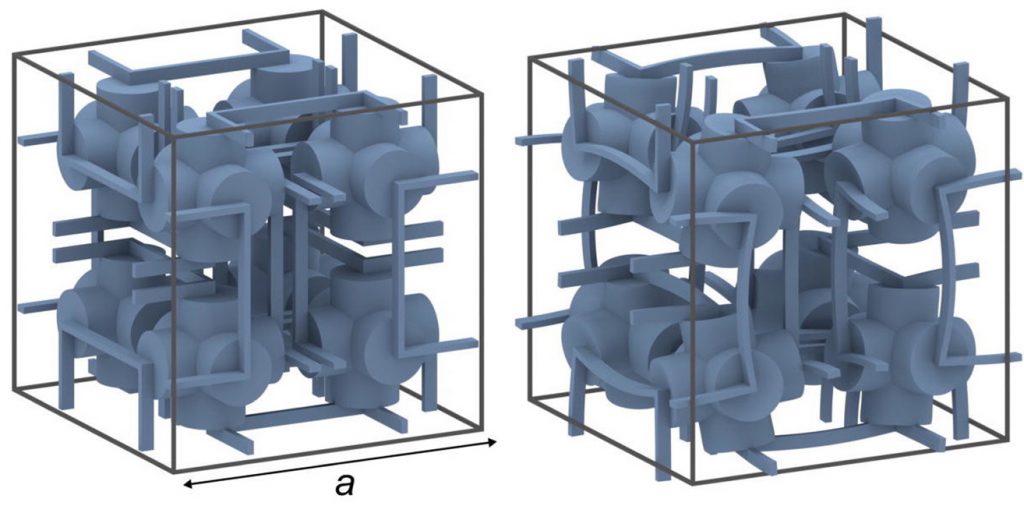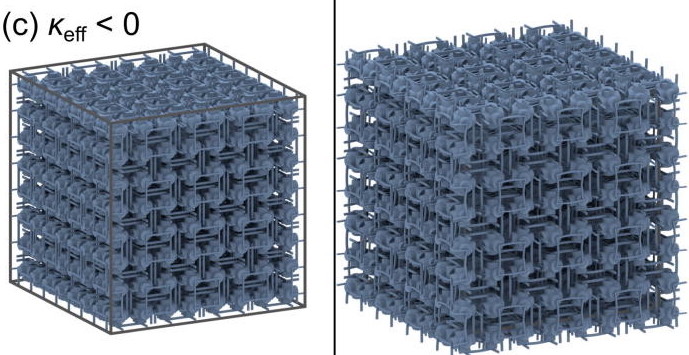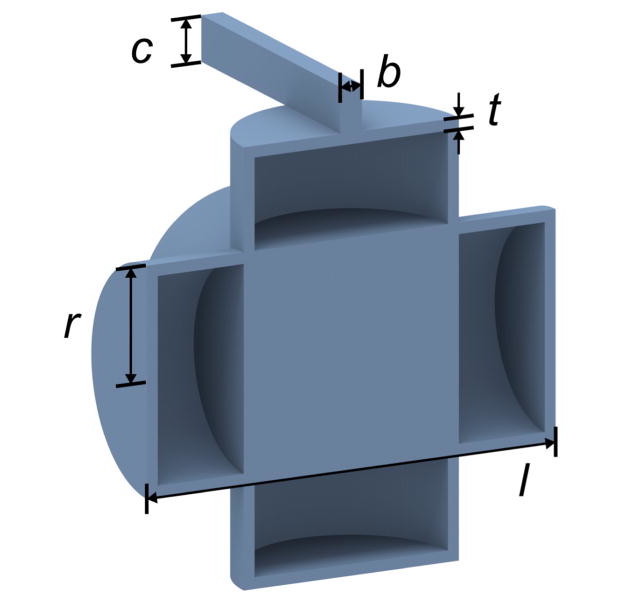The Université de Bourgogne Franche-Comté in France, and Germany’s Karlsruhe Institute of Technology (KIT) behind recent research on 3D printed micro glass, have published a study giving the blueprint for a new material that behaves “outside of its nature”.
The so-termed metamaterial reacts to external pressure in an unexpected way, making “effectively incompressible” materials out of what would typically be a “compressible ingredient”.

Breaking it down
The structures proposed by Jingyuan Qu, Muamer Kadic and Martin Wegener are composed of a single material rather than a composite. The incompressibility of the structure is therefore dependent upon the material’s geometric design.

Design takes the shape of multiple “cross” modules, connected by thin, right-angled brackets. The cross modules are rounded and, when sliced in half, reveal a composition of four hollow compartments (in each of the arms) and a solid center.

With thin and flexible walls, these hollow compartments are able to warp either inwards and outwards depending up on the difference between external and internal air pressure. For this to occur, the researchers take for granted that the material of the walls has some minute porosity, rendering the exact volume of the compartments irrelevant, as air or water molecules can still pass through.
As the walls warp, the right angled bars attached to the ends mean that the crosses rotate under the pressure, increasing the overall cubic volume of the material rather than decreasing it.
Making materials on a micro and macro scale
The goal of this research is ultimately to engineer such a metamaterial on the microscale, meaning that it becomes the primary material for a larger functioning object. However, as detailed by the authors, “macroscopic demonstrations using 3D polymer printers may be possible, too.”
The key challenge in 3D printing on either scale is in the material selected to form the complex geometric structure. The hollow compartments of the design are essential to incompressibility, and the thin walls enclosing these spaces need to “guarantee that gas diffusion through the membrane is negligible.”
3D printing holds the key
With the design capabilities of 3D printing the method is under exploration by a number of other institutions for its ability to create metamaterials.
A paper published in Advanced Structured Materials titled Can a Hencky-Type Model Predict the Mechanical Behaviour of Pantographic Lattices? combines theory with 3D printing to make the most of a lattice’s elasticity. 3D printing is also key to research released by Duke University into the fabrication of conductive copper metamaterials.
The research detailed in this particular article is published online in Applied Physics Letters as Poroelastic metamaterials with negative effective static compressibility. It is authored by Jingyuan Qu, Muamer Kadic and Martin Wegener.
For more of the latest 3D printing related research news sign up to the 3D Printing Industry newsletter, and follow our active social media sites.
Don’t forget to vote in the first annual 3D Printing Industry Awards.
Limited tickets for the 3D Printing Industry Awards are also now available here.
Featured image shows a portion of the proposed metamaterial structure, with cross-section (right) of one hollow capsule. Images via Jingyuan Qu, Muamer Kadic and Martin Wegener



